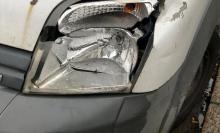The risk from driving under the influence of psycho-active drugs results in road fatalities and injuries from crashes right across Europe, according to the report. The problem relates to both legal prescription medication as well as illegal drugs, notes
Both classifications can be the cause of impaired abilities for drivers. The issue of impaired ability from drug use can be further compounded with multiple use or the consumption of alcohol.
Despite the risks from drivers using drugs, it is only in recent times that the problem has been properly analysed. One major project in Europe to study drug use by drivers and the effects this can have, the DRUID programme, has provided key information into the topic.
The results of the DRUID programme have been compiled into this new report, showing the increased risks of crashes and collisions for drivers under the influence of drugs. The report also details the different effects of different types of drugs on driving performance, as well as localised trends towards the use of one type of drug or another in different geographic areas. The report highlights a series of measures to help reduce drug use among drivers. The report also highlights the issues that give cause to the drug use in the first place.
The majority of countries have legislation with regard to the use of illegal drugs and some also have laws relating to the use of both legal and illegal drugs while driving. The laws vary from country to country, however, and may vary further with regard to driving, depending on whether the drugs are legal or illegal. Different penalties for offenders can apply, too, with regard to the degree of impairment of the driver.
Law enforcement agencies now have the benefit of access to improved systems for detecting use of drugs by drivers, which can also determine the types and quantities of drugs - legal and illegal - that have been taken.
There is better education for drivers through new awareness campaigns in many countries to highlight the dangers of driving under the influence of psychoactive drugs and to educate the public about the effects they can have and the consequences drug-driving can lead to. These approaches can be targeted at those groups in which drug-driving is known to be prevalent.
Rehabilitation and healthcare provide pathways for offenders to return to driving while also helping to reduce the likelihood of recidivism. Schemes vary from country to country and by type of offender. Some forms of rehabilitation are handled primarily by driver licensing authorities, whereas others are more healthcare oriented.
Recommendations have been made based on those countermeasures and approaches shown to be most effective. One key issue is a zero-tolerance system for illicit psychoactive drugs using the lowest limit of quantification that takes account of passive or accidental exposure. Another recommendation is for more research into the effects of common psychoactive drugs on driving behaviour to ensure countermeasures are fit-for-purpose and keep in line with evolving behaviours.
In addition, there should be improved monitoring of drug use in traffic to gain more insight into its prevalence, development and trends. Police forces need to be properly trained in when and how to perform drug screening - such as preselection based on checklist, saliva test, confirmation test – as well as field impairment tests and use of roadside screening devices.
There should be targeted education and campaigns directed at high-risk groups such as young males. There should be the introduction of regulated assessment and rehabilitation based on criteria or common standards.
Driving Under the Influence of Drugs, Alcohol and Medicines in Europe - findings from the DRUID project is available as a free download from the European Monitoring Centre for Drugs and Drug Addiction. EMCDDA was set up in Lisbon in 1993 to provide factual evidence to support the drugs debate among European Union member states as they legislate drug laws and strategies.
The risk of drugged driving on Europe’s roads
Drivers under the influence of drugs present a major hazard to road safety, according to a new report by the pan-European police agency TISPOL
The risk from driving under the influence of psycho-active drugs results in road fatalities and injuries from crashes right across Europe, according to the report. The problem relates to both legal prescription medication as well as illegal drugs, notes TISPOL – European Traffic Police Network – which was established by the traffic police forces of Europe to impro
Drivers under the influence of drugs present a major hazard to road safety, according to a new report by the pan-European police agency TISPOL





